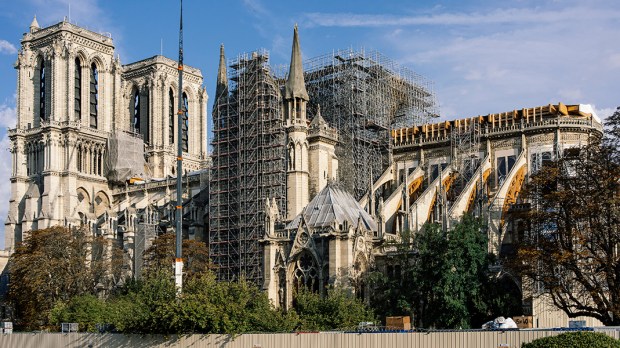Lenten Campaign 2025
This content is free of charge, as are all our articles.
Support us with a donation that is tax-deductible and enable us to continue to reach millions of readers.
Notre Dame is still in bad shape after a fire tore through the historic structure in April 2019. While the people of Paris lament that the famed cathedral may be closed for up to a decade, scientific experts are making the best of this bad situation, as parts of the building that would never have been accessible before the fire have been revealed for study.
One such area of study is in the now-gutted attic, which was known as Notre Dame’s “Forest,” an affectionate name that describes the numerous massive wooden beams that make up the frame of the roof. The wood here, which has now been marred by fire, dates back to the original construction of Notre Dame, with some of the wood dating as far back as the 11th century.
Alexa Dufraisse, a dendroanthropologist, suggested that studying this nearly 1,000-year-old wood could give us insight into historical weather patterns, which could in turn teach us about modern climate change. She told Science News that this study could not have been undertaken had the fire not occurred.
Another group has made a study of the limestone used in the construction. Experts are working to determine which stones can be reused and which ones must be replaced. This is an important task for the reconstruction of the medieval building, as limestone quarried from different areas of the world can vary greatly in quality.
Science News’ Emily Conover notes that if water or pollutants accumulated in a replacement stone faster than in one of the originals, this could cause deterioration of the new stone, leading to structural instability.
Another ambitious effort has been conducted by the team responsible for determining the extent of lead contamination in the area surrounding the cathedral. The tests are very time-consuming, as when lead contamination is discovered, it must be carbon-dated in order to show that it was from the Notre Dame fire. Once they have determined the extent of the area’s exposure to toxic lead, they will know the full scope of their cleanup efforts.
These are just some of the scientific studies that are active at Notre Dame, but there are several other teams surrounding the structure. Conover reports that one of these groups is studying the psychological effect that the fire had on cathedral personnel, as well as that of the church musicians who have been without a venue for these nine months.
Another small group is studying the acoustics of the ruined building, with the hope that they might restore the unique echoes for which Notre Dame was famous. Earlier this year, Conover gave an extensive report on this effort to Science News.
The loss of Notre Dame has been felt by Christians the world over, but, while it is a tragedy, we are uplifted to see that there can be good to come of it. These studies may even give us insight into the methods employed by Notre Dame’s medieval architects to raise the massive limestone blocks into position, a feat performed without modern machinery that has since been lost to time.

